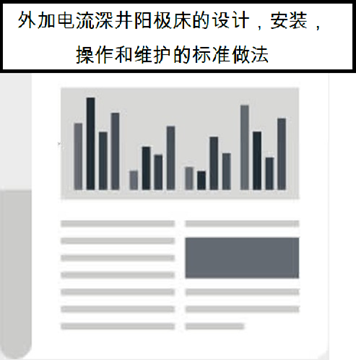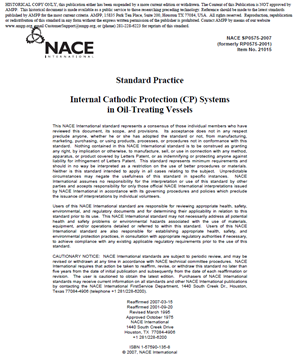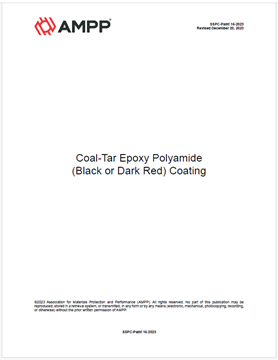Search
Products tagged with 'tanks'
View as
Sort by
Display
per page
SP0572-2007-SG (Chinese) - Design, Installation, Operation, and Maintenance of Impressed Current Deep Anode Beds
Product Number:
21152-SG
ISBN:
1-57590-117-X
Publication Date:
2007
$179.00
SP0575-2007 (formerly RP0575), Internal Cathodic Protection (CP) Systems in Oil-Treating Vessels
Product Number:
21015-SG
Publication Date:
2007
$179.00
SSPC-Paint 16-2023, Coal-Tar Epoxy Polyamide (Black or Dark Red) Coating
Product Number:
SSPC-Paint 16-2023
Publication Date:
2023
$109.00
Step Change Epoxy Coatings for Pipes, Tanks, Vessels and Railcars
Product Number:
51218-104-SG
Publication Date:
2018
$20.00
TM0101-2012-SG Measurement Techniques Related to Criteria for Cathodic Protection of Underground Storage Tank Systems
Product Number:
21240-SG
ISBN:
1-57590-137-4
Publication Date:
2012
$109.00
TM0106-2016-SG, Detection, Testing, and Evaluation of Microbiologically Influenced Corrosion (MIC) on External Surfaces of Buried Pipelines
Product Number:
21248-SG
ISBN:
1-57590-206-0
Publication Date:
2016
$109.00
TM0109-2009-SG, Aboveground Survey Techniques for the Evaluation of Underground Pipeline Coating Condition
Product Number:
21254-SG
ISBN:
1-57590-226-5
Publication Date:
2009
$109.00
TM0111-2011-SG Slow Strain Rate Test Method for Evaluation of Ethanol Stress Corrosion Cracking in Carbon Steels
Product Number:
21255-SG
ISBN:
1-57590-242-7
Publication Date:
2011
$109.00
TM0115-2015, “Cathodic Disbondment Test for Coated Steel Structures under Cathodic Protection”
Product Number:
21269-SG
Publication Date:
2015
$179.00
TM0497-2018, Measurement Techniques Related to Criteria for Cathodic Protection on Underground or Submerged Metallic Piping Systems
Product Number:
21231-SG
Publication Date:
2018
$179.00
TM0497-HD2012-SG Measurement Techniques Related to Criteria for Cathodic Protection on Underground or Submerged Metallic Piping Systems
Product Number:
21231-HD2012
ISBN:
1-57590-047-5
Publication Date:
2012
$179.00











